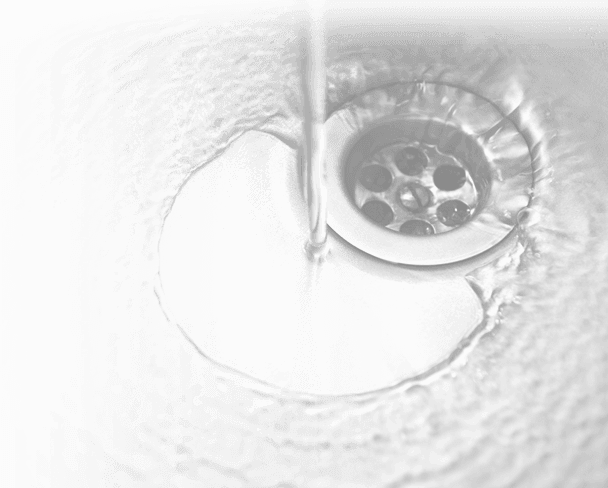Major Plumbing Code Violations You Need to Know About
Though most people don’t pay much attention to them, building codes are incredibly important. These codes help to ensure that buildings are safe to use. If plumbing codes get ignored, you can end up with pipe leaks, contaminated water, and other massive issues. Code violations are especially common when people have done DIY installations, but they can even happen when you’re counting on professionals. Knowing what code violations to look for can help you ensure that plumbing mistakes don’t ruin your property.
NOT ENOUGH SPACE AROUND THE TOILET
The typical rule is that the centre of the toilet needs to be a certain amount of space away from any finished wall. A lot of people ignore this rule and shove their toilet into a small enclosure to save space. Overall, this can lead to quite a few issues. First of all, it can make it uncomfortable to use the toilet. Especially if the people in the restroom are larger, using the toilet can be difficult. The tight space can also make it impossible to reach the area behind the toilet. This becomes a problem if the toilet breaks because you might not be able to turn off the water supply and stop the leak.
LACK OF PROPER VENTILATION IN THE BATHROOM
According to plumbing codes, every bathroom needs some form of ventilation. This is supposed to do more than just reduce stinky smells. It also helps to remove excess moisture which could otherwise cause mould to form. However, many people aren’t aware that they need ventilation, so this step can get skipped during bathroom renovations. Another common issue is an improper vent. A bathroom fan should exit the house and go somewhere like the roof or an exterior wall. Unfortunately, many vents end up leaking or venting into areas like the attic. Though you might not notice this mistake, it can end up causing water damage, mildew, or mould inside of your home.
IMPROPERLY INSTALLED WATER HEATER RELIEF VALVES
All water heaters are supposed to have a special safety device that is called a pressure and temperature relief valve. This valve is supposed to provide an outlet if temperature and pressure levels inside of the heater are reaching unsafe levels. In some cases, the valve can end up being improperly installed or even accidentally removed. Though this plumbing violation is rare, it is extremely dangerous. When the valve is not working correctly, there is no way for the water heater to relieve pressure. The end result can be pressure building up inside the tank that causes it to explode. Depending on where your water heater is placed, you could end up damaging your home severely or harming one of your family members.
INCORRECTLY SLOPED DRAIN PIPES
All drain pipes are supposed to slope at a specific angle. This downward slope uses gravity to help move wastewater to your sewage system. In some cases, a person may fail to slope the pipes correctly when installing them. In other situations, shifting ground or loose supports can cause the pipes to lose their original slope. When this happens, you can encounter a variety of inconvenient and unsanitary problems. If the pipes are just a little too flat, wastewater moves more slowly. This gives more time for clogs to form, and there is less water pressure to force debris through. If your pipes slope upwards instead of downwards, you have more issues than just inconvenient clogs. This can cause your wastewater to flow backward. You can end up with bacteria-filled water sitting in your showers, sinks, and other fixtures.
USING S-TRAPS INSTEAD OF P-TRAPS
P-traps and S-traps are a type of water trap that helps to hold some water in the pipe beneath a sink or toilet. They get their name from the shape of the pipe, which can look like an S or a P. This traps a little water in the pipe bed so that air from the waste pipe does not flow up into the home. In most modern homes, P-traps are recommended or required. These traps do a better job of actually keeping sewer gasses out of the home. However, during DIY installations, many people use S-traps instead because they can be a little more compact and easy to install. The problem with S-traps is that they can actually end up siphoning sewer air into the home. This can be a health hazard and potentially cause other issues as well. Keep in mind that some places do technically allow S-traps, especially in older devices. However, they’re never advisable.
NOT APPLYING FOR PERMITS OR FILLING OUT THE RIGHT PAPERWORK
When you’re in the middle of a remodel, it can be easy to overlook some paperwork. Even when you’re working with licensed plumbers, you might accidentally forget to handle all the necessary paperwork. Skipping the permitting and inspection process can be a big problem. Even though your home might be technically up to code, from a legal perspective, it is violating plumbing codes. This can be a problem if anything breaks since your warranties might not cover the damage. Furthermore, if you want to sell or rent the home, you can run into some problems. To avoid any inconvenience, it is a good idea to carefully go over all requirements for any plumbing changes.
FORGETTING TO INCLUDE ENOUGH CLEANOUTS
Cleanouts are small accessibility panels in various plumbing systems. They help you to easily reach certain sections of the pipes so that you can clean out clogs. The Australian plumbing codes require cleanouts to be placed in specific places in your pipework. Even if your home originally had enough cleanouts, altering your plumbing could mean you end up with long stretches of pipes without cleanouts. This can be a big inconvenience when you get a clog. Without proper cleanouts, a minor repair becomes a huge hassle that could require you to take apart your pipework.
USING IMPROPER PLUMBING MATERIALS
There are a lot of older plumbing materials that technically work but cause problems later on. Things like rubber fittings or corrugated pipes are often banned from plumbing codes because they are so problematic. Instead, licensed plumbers will use quality materials that keep working for years. However, many DIY plumbers will just grab the nearest or cheapest materials and get to work. Though these can create a functional plumbing system, it can be harder for them to get approved. In addition to failing local plumbing codes, these materials can also make you need more repairs in the future.
If you notice any of these issues, it might be a good idea to get your property checked out by a licensed plumbing technician. At Reactive Plumbing, our team is thoroughly trained in all building codes and industry best practices. We can help you ensure your plumbing is safe, reliable, and efficient. We offer a variety of routine maintenance, plumbing repairs, and plumbing installations throughout the North Shore and Sydney areas. To learn more about our services, give us a call today.
SCHEDULE WITH US TODAY
Page Form


